| Programming ASP.NET MVC 4 Posted: 06 Oct 2012 09:23 AM PDT 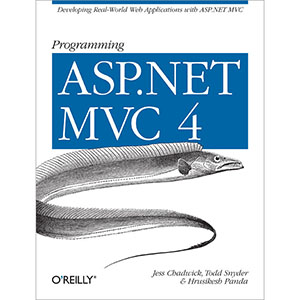
Book Description Get up and running with ASP.NET MVC 4, and learn how to build modern server-side web applications. This guide helps you understand how the framework performs, and shows you how to use various features to solve many real-world development scenarios you're likely to face. In the process, you'll learn how to work with HTML, JavaScript, the Entity Framework, and other web technologies. You'll start by learning core concepts such as the Model-View-Controller architectural pattern, and then work your way toward advanced topics. The authors demonstrate ASP.NET MVC 4 best practices and techniques by building a sample online auction site (“EBuy”) throughout the book. - Learn the similarities between ASP.NET MVC 4 and Web Forms
- Use Entity Framework to create and maintain an application database
- Create rich web applications, using jQuery for client-side development
- Incorporate AJAX techniques into your web applications
- Learn how to create and expose ASP.NET Web API services
- Deliver a rich and consistent experience for mobile devices
- Apply techniques for error handling, automated testing, and build automation
- Use various options to deploy your ASP.NET MVC 4 application
Table of Contents
Part I: Up and Running
Chapter 1. Fundamentals of ASP.NET MVC
Chapter 2. ASP.NET MVC for Web Forms Developers
Chapter 3. Working with Data
Chapter 4. Client-Side Development Part II: Going to the Next Level
Chapter 5. Web Application Architecture
Chapter 6. Enhancing Your Site with AJAX
Chapter 7. The ASP.NET Web API
Chapter 8. Advanced Data
Chapter 9. Security
Chapter 10. Mobile Web Development Part III: Going Above and Beyond
Chapter 11. Parallel, Asynchronous, and Real-Time Data Operations
Chapter 12. Caching
Chapter 13. Client-Side Optimization Techniques
Chapter 14. Advanced Routing
Chapter 15. Reusable UI Components Part IV: Quality Control
Chapter 16. Logging
Chapter 17. Automated Testing
Chapter 18. Build Automation Part V: Going Live
Chapter 19. Deployment Part VI: Appendixes
Appendix A. ASP.NET MVC and Web Forms Integration
Appendix B. Leveraging NuGet as a Platform
Appendix C. Best Practices
Appendix D. Cross-Reference: Targeted Topics, Features, and Scenarios Book Details - Paperback: 492 pages
- Publisher: O’Reilly Media (September 2012)
- Language: English
- ISBN-10: 1449320317
- ISBN-13: 978-1449320317
Note: There is a file embedded within this post, please visit this post to download the file. Related Posts The post Programming ASP.NET MVC 4 appeared first on Wow! eBook - Blog. 

|
| Juniper MX Series Posted: 06 Oct 2012 09:17 AM PDT 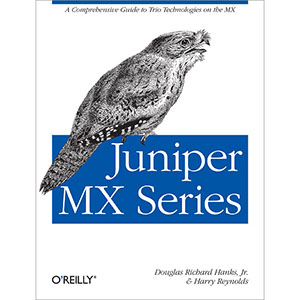
Book Description Discover why routers in the Juniper MX Series, with their advanced feature sets and record breaking scale, are so popular among enterprises and network service providers. This authoritative book shows you step-by-step how to implement high-density, high-speed Layer 2 and Layer 3 Ethernet services, using Router Engine DDoS Protection, Multi-chassis LAG, Inline NAT, IPFIX/J-Flow, and many other Juniper MX features. Written by Juniper Network engineers, each chapter covers a specific Juniper MX vertical and includes review questions to help you test what you learn. - Delve into the Juniper MX architecture, including the next generation Junos Trio chipset
- Explore Juniper MX's bridging, VLAN mapping, and support for thousands of virtual switches
- Add an extra layer of security by combining Junos DDoS protection with firewall filters
- Create a firewall filter framework that only applies filters specific to your network
- Discover the advantages of hierarchical scheduling
- Combine Juniper MX routers, using a virtual chassis or Multi-chassis LAG
- Install network services such as Network Address Translation (NAT) inside the Trio chipset
- Examine Junos high availability features and protocols on Juniper MX
“For the no-nonsense engineer who likes to get down to it, The Juniper MX Series targets both service providers and enterprises with an illustrative style supported by diagrams, tables, code blocks, and CLI output. Readers will discover features they didn’t know about before and can’t resist putting them into production.”
—Ethan Banks, CCIE #20655, Packet Pushers Podcast Host Table of Contents
Chapter 1. Juniper MX Architecture
Chapter 2. Bridging, VLAN Mapping, IRB, and Virtual Switches
Chapter 3. Stateless Filters, Hierarchical Policing, and Tri-Color Marking
Chapter 4. Routing Engine Protection and DDoS Prevention
Chapter 5. Trio Class of Service
Chapter 6. MX Virtual Chassis
Chapter 7. Trio Inline Services
Chapter 8. Multi-Chassis Link Aggregation
Chapter 9. Junos High Availability on MX Routers Book Details - Paperback: 902 pages
- Publisher: O’Reilly Media (September 2012)
- Language: English
- ISBN-10: 1449319718
- ISBN-13: 978-1449319717
Note: There is a file embedded within this post, please visit this post to download the file. Related Posts The post Juniper MX Series appeared first on Wow! eBook - Blog. 

|
| Cloud Architecture Patterns Posted: 06 Oct 2012 09:11 AM PDT 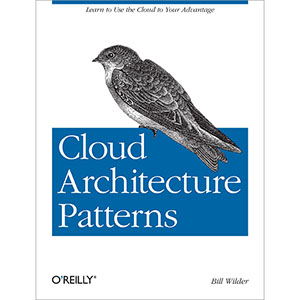
Book Description If your team is investigating ways to design applications for the cloud, this concise book introduces 11 architecture patterns that can help you take advantage of several cloud-platform services. You'll learn how each of these platform-agnostic patterns work, when they might be useful in the cloud, and what impact they'll have on your application architecture. You'll also see an example of each pattern applied to an application built with Windows Azure. The patterns are organized into four major topics, such as scalability and eventual consistency, and primer chapters provide background on each topic. With the information in this book, you'll be able to make informed decisions for designing effective cloud-native applications, where cloud-native applications maximize the value of cloud services while also paying attention to user experience and operational efficiency. Learn about architectural patterns for: - Scalability. Discover the advantages of horizontal scaling. Patterns covered include Horizontally Scaling Compute, Queue-Centric Workflow, and Auto-Scaling.
- Big data. Learn how to handle large amounts of data across a distributed system. Eventual consistency is explained, along with the MapReduce and Database Sharding patterns.
- Multitenancy and commodity hardware. Understand how they influence your applications. Patterns covered include Busy Signal and Node Failure.
- Network latency. Learn how to overcome delays due to network latency when building applications for a geographically distributed user base. Patterns covered include Colocation, Valet Key, CDN, and Multi-Site Deployment.
Table of Contents
Chapter 1. Scalability Primer
Chapter 2. Horizontally Scaling Compute Pattern
Chapter 3. Queue-Centric Workflow Pattern
Chapter 4. Auto-Scaling Pattern
Chapter 5. Eventual Consistency Primer
Chapter 6. MapReduce Pattern
Chapter 7. Database Sharding Pattern
Chapter 8. Multitenancy and Commodity Hardware Primer
Chapter 9. Busy Signal Pattern
Chapter 10. Node Failure Pattern
Chapter 11. Network Latency Primer
Chapter 12. Colocate Pattern
Chapter 13. Valet Key Pattern
Chapter 14. CDN Pattern
Chapter 15. Multisite Deployment Pattern Book Details - Paperback: 182 pages
- Publisher: O’Reilly Media (September 2012)
- Language: English
- ISBN-10: 1449319777
- ISBN-13: 978-1449319779
Note: There is a file embedded within this post, please visit this post to download the file. Related Posts The post Cloud Architecture Patterns appeared first on Wow! eBook - Blog. 

|
| Building a Windows IT Infrastructure in the Cloud Posted: 06 Oct 2012 09:07 AM PDT 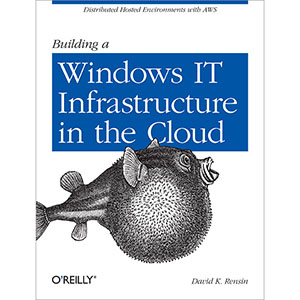
Book Description Run your entire corporate IT infrastructure in a cloud environment that you control completely—and do it inexpensively and securely with help from this hands-on book. All you need to get started is basic IT experience. You'll learn how to use Amazon Web Services (AWS) to build a private Windows domain, complete with Active Directory, enterprise email, instant messaging, IP telephony, automated management, and other services. By the end of the book, you'll have a fully functioning IT infrastructure you can operate for less than $300 per month. - Learn about Virtual Private Cloud (VPC) and other AWS tools you'll use
- Create a Windows domain and set up a DNS management system
- Install Active Directory and a Windows Primary Domain Controller
- Use Microsoft Exchange to set up an enterprise email service
- Import existing Windows Server-based virtual machines into your VPC
- Set up an enterprise-class chat/IM service, using the XMPP protocol
- Install and configure a VoIP PBX telephony system with Asterisk and FreePBX
- Keep your network running smoothly with automated backup and restore, intrusion detection, and fault alerting
Table of Contents
Chapter 1. To the Cloud!
Chapter 2. Directories, Controllers, and Authorities—Oh My!
Chapter 3. Let There Be Email!
Chapter 4. Doing Things the Easy Way
Chapter 5. Do You Have Some Time to Chat?
Chapter 6. The Voice of a New Generation
Chapter 7. Keeping Your Network Fit, Trim, and Healthy
Chapter 8. For Those About to Grok, We Salute You Book Details - Paperback: 186 pages
- Publisher: O’Reilly Media (September 2012)
- Language: English
- ISBN-10: 1449333583
- ISBN-13: 978-1449333584
Note: There is a file embedded within this post, please visit this post to download the file. Related Posts The post Building a Windows IT Infrastructure in the Cloud appeared first on Wow! eBook - Blog. 

|
| Selectors, Specificity, and the Cascade Posted: 06 Oct 2012 09:02 AM PDT 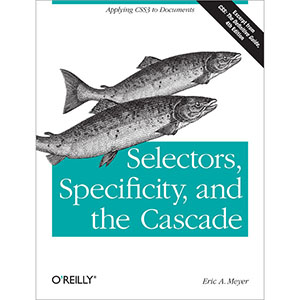
Book Description Exactly how does the “cascade” in Cascading Style Sheets work? This concise guide demonstrates the power and simplicity of CSS selectors for applying style rules to different web page elements. You'll learn how your page's presentation depends on a multitude of style rules and the complex ways they function—and sometimes collide—within the document's structure. This guide is a chapter from the upcoming fourth edition of CSS: The Definitive Guide. When you purchase either the print or the ebook edition of Selectors, Specificity, and the Cascade, you'll receive a significant discount on the entire Definitive Guide when it's released. Why wait when you can learn how to use selectors and other key CSS 3 features right away? - Learn how to create CSS rules that apply to a large number of similar elements
- Group rules to make style sheets smaller and download times faster
- Understand how elements inherit styles from their parents
- Discover how reader and browser preferences affect your page presentation
- Examine specificity—the method browsers use to choose between two conflicting style rules
- Get a handle on how specificity and inheritance combine to form the cascade
- Get details on all of the CSS3 selectors
Table of Contents
Chapter 1. Selectors
Chapter 2. Specificity and the Cascade Book Details - Paperback: 86 pages
- Publisher: O’Reilly Media (September 2012)
- Language: English
- ISBN-10: 1449342493
- ISBN-13: 978-1449342494
Note: There is a file embedded within this post, please visit this post to download the file. Related Posts The post Selectors, Specificity, and the Cascade appeared first on Wow! eBook - Blog. 

|







Tidak ada komentar:
Posting Komentar